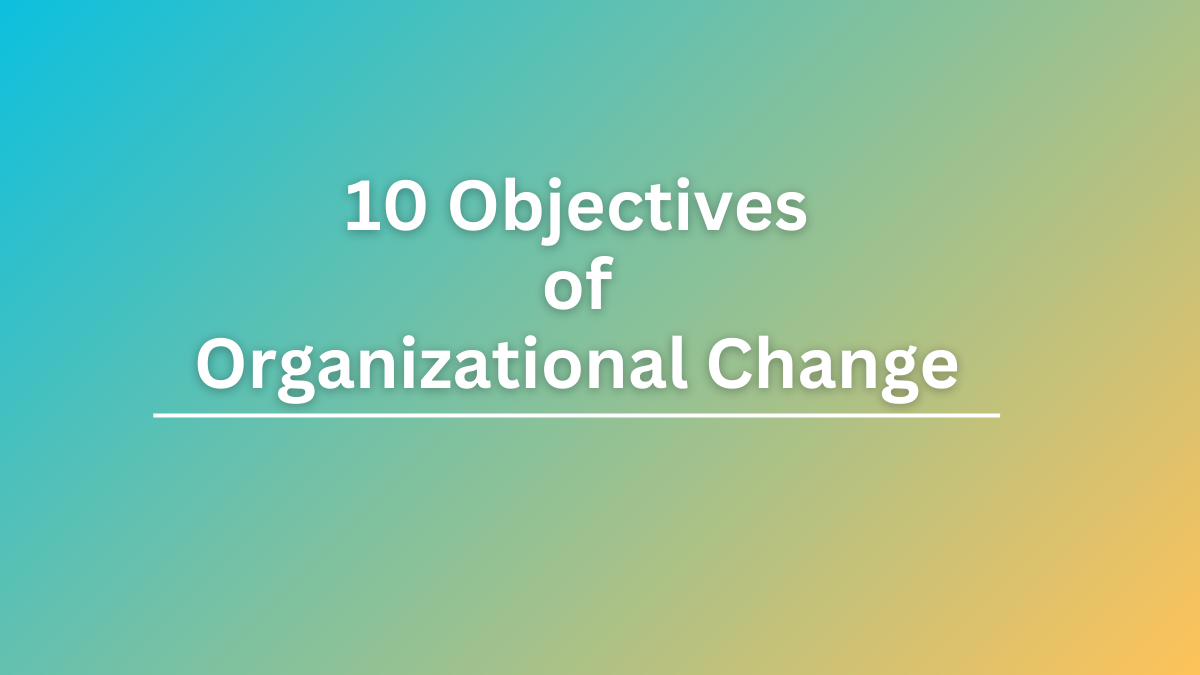Objectives of Organizational Change
Organizational change is a strategic way to change an organization’s structure to achieve better future results. In this article, we will explore the 10 major organizational change objectives. So, let’s get started:
Strategic Alignment
Organizational change aims to ensure that organizational change aligns with the overall strategic goals and vision.
Organizational change should be strategically driven, aiming to enhance the organization’s competitiveness and long-term sustainability. Aligning change initiatives with strategic objectives ensures a cohesive and purposeful transformation.
Enhanced Operational Efficiency
Objective: Improve and streamline organizational processes for increased efficiency.
Organizational change often targets operational aspects to eliminate redundancies, optimize workflows, and enhance overall efficiency. The objective is to create a more agile and productive organizational structure.
Cultural Transformation
Objective: Foster a positive and adaptive organizational culture.
Change should address cultural elements, fostering a work environment that values innovation, collaboration, and continuous improvement. A positive culture supports the successful implementation and sustainability of change initiatives.
Talent Development
Objective: Develop and empower employees to meet the demands of change.
Organizational change should include initiatives for skill development, training, and creating a learning culture. Empowering employees with the necessary skills enhances their ability to contribute effectively to the changed environment.
Stakeholder Engagement
Objective: Actively involve and communicate with stakeholders throughout the change process.
Engaging stakeholders, including employees, customers, and partners, ensures their buy-in and support. Clear and consistent communication fosters a shared understanding and commitment to the change objectives.
Read More: 10 Key Objectives of Controlling in Business
Risk Mitigation
Objective: Identify and mitigate potential risks associated with the change.
Change initiatives carry inherent risks. The objective is to proactively identify and address these risks to minimize disruptions and ensure a smoother transition. Risk management strategies contribute to the overall success of the change.
Technology Integration
Objective: Integrate new technologies to enhance organizational capabilities.
In the digital transformation era, change in organizations often involves adopting new technologies. The objective is to leverage technological advancements to improve processes, communication, and overall organizational effectiveness.
Read More: What is Deming Management?
Customer-Centricity
Objective: Enhance the organization’s focus on meeting customer needs and expectations.
Changes should be customer-centric, aiming to improve products, services, and overall customer experience. A customer-focused approach ensures sustained relevance and competitiveness.
Financial Optimization
Objective: Achieve cost-effectiveness and financial sustainability.
Change initiatives often target cost structures and financial processes to ensure optimal resource allocation. The objective is to achieve financial sustainability while maintaining or improving performance.
Read More: What is the Communication Process?
Sustainable Change Adoption
Objective: Facilitate a culture of continuous improvement and adaptability.
Beyond specific initiatives, the overarching objective of organizational change is to instill a mindset of continuous improvement and adaptability within the organization. This ensures that the capacity for change becomes embedded in the organizational DNA, fostering long-term success.
Hence, these are the 10 objectives of organizational change in business.
Read Next: Leadership in Management

Sujan Chaudhary holds a Bachelor in Business Administration (BBA) degree and is currently pursuing an MBA degree. He loves to share his business knowledge with the rest of the world.
